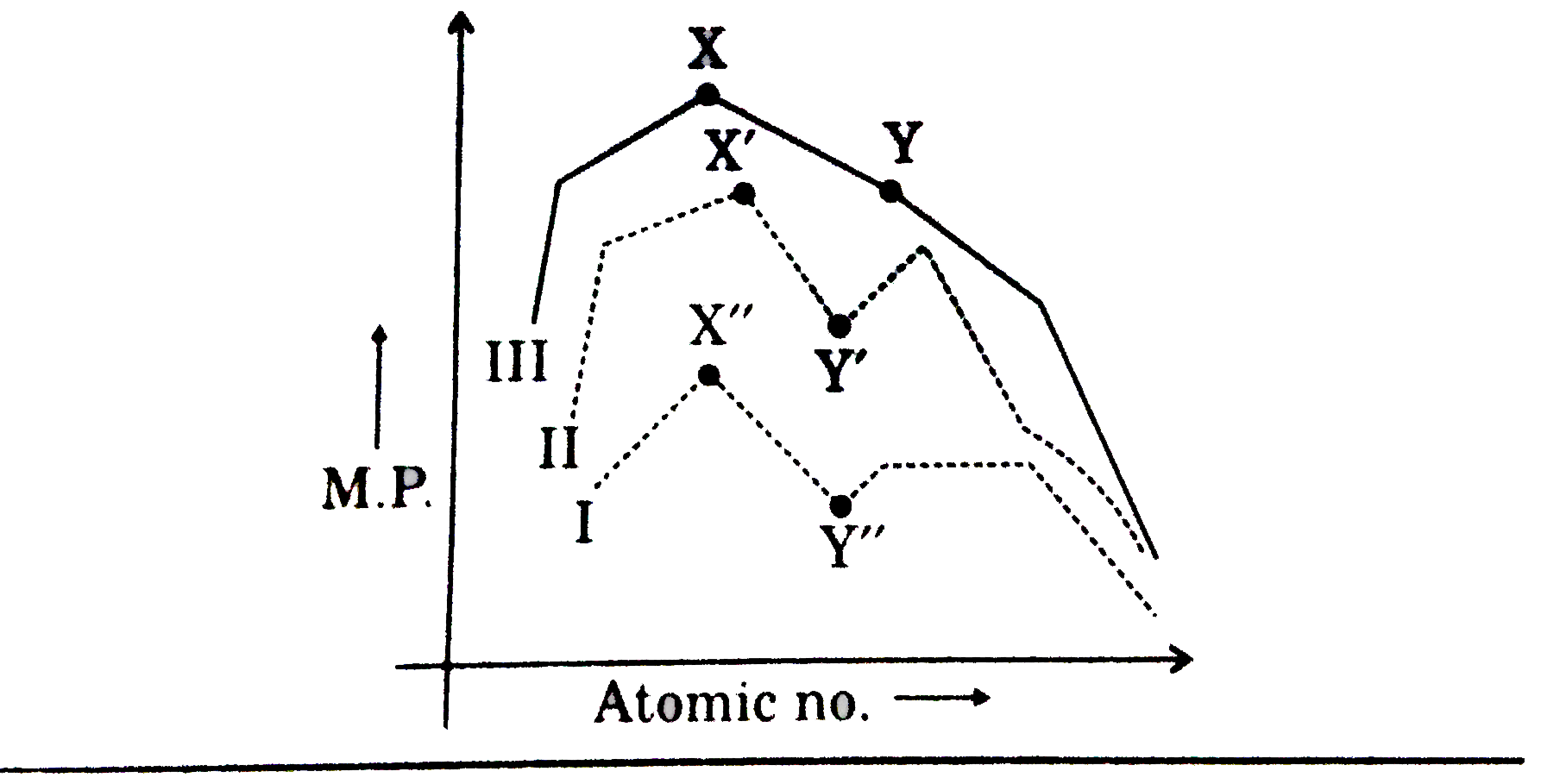State reasons for the following:
(i) Cu (1) ion is not stable in an aqueous solution.
(ii) Unlike Cr3+,Mn2+,Fe3+ and the subsequent other M2+ ions of the 3d series of elements, the 4d and 5d series metals generally do not form stable cationic species.
(i) Cu (I) ion does not exhibit sufficiently negative value of enthalpy of hydration and it proportionates into 0 and +2 oxidation states of Cu.
2Cu+→Cu2++Cu
(ii) 4d and 5d series transition metals have greater enthalpies of atomisation. Thus, there are strong metal-metal interactions between them. This is the reason why they do not form stable cationic species.
Topper's Solved these Questions
- THE D-AND F-BLOCK ELEMENTS BOOK - U-LIKE SERIESCHAPTER - THE D-AND F-BLOCK ELEMENTS EXERCISE - LONG ANSWER QUESTIONS-I (3 marks each)
22 Videos
- THE D-AND F-BLOCK ELEMENTS BOOK - U-LIKE SERIESCHAPTER - THE D-AND F-BLOCK ELEMENTS EXERCISE - LONG ANSWER QUESTIONS-II (5 marks each)
21 Videos
- THE D-AND F-BLOCK ELEMENTS BOOK - U-LIKE SERIESCHAPTER - THE D-AND F-BLOCK ELEMENTS EXERCISE - VERY SHORT ANSWER QUESTIONS (1 mark each)
63 Videos
- SURFACE CHEMISTRYBOOK - U-LIKE SERIESCHAPTER - SURFACE CHEMISTRYEXERCISE - SELF ASSESSMENT TEST ( SECTION A)
7 Videos
- THE P-BLOCK ELEMENTS BOOK - U-LIKE SERIESCHAPTER - THE P-BLOCK ELEMENTS EXERCISE - SELF ASSESSMENT TEST ( SECTION A)
7 Videos
Similar Questions
Complete the following chemical equation:
(i) MnO−4(aq)+s2O2−3(aq)+H2O(I)to
(ii) MnO−4+NO−2+H+to
State reason for the following :
(i) Cu(I) ion is not stable in an aqueous solution.
(ii) Unlike Cr3+,Mn2+,Fe3+ and the subsequently other M2+ ions of the 3d series of elements, the 4d and the 5d series metals generally do not form stable cationic species.
View SolutionComplete the following chemical equation:
(i) MnO−4(aq)+s2O2−3(aq)+H2O(I)to (ii) MnO−4+NO−2+H+to
State reason for the following :
(i) Cu(I) ion is not stable in an aqueous solution.
(ii) Unlike Cr3+,Mn2+,Fe3+ and the subsequently other M2+ ions of the 3d series of elements, the 4d and the 5d series metals generally do not form stable cationic species.
View Solution
Knowledge Check
Assertion : Cu+ ion is not stable in aqueous solution.
Reason :Cu+ contains 3d-filled subshell.AAssertion and reason both are correct statements and reason is correct explanation for assertion.BAssertion and reason both are correct statements but reason is not correct explanation for assertion.CAssertion is correct statement but reason is wrong statement.DAssertion is wrong statement but reason is correct statement
Refer to the graph for trends in M.P. of transition elements of 3d,4d and 5d series.
Q. A metal having high boiling point:Ahas high enthalpy of atomizationBtends to be noble in their reactionsChas strong metallic bondingDall of the above.
State the reason for the following :
(i) Cu (I) ion is not stable in an aqueous solution.
(ii) Unlike Cr3+,Mn2+,Fe3+ and the subsequent other M2+ ions of the 3d series, the 4d and 5d series metals generally do not form stable oxidation states.
View SolutionState the reason for the following :
(i) Cu (I) ion is not stable in an aqueous solution.
(ii) Unlike Cr3+,Mn2+,Fe3+ and the subsequent other M2+ ions of the 3d series, the 4d and 5d series metals generally do not form stable oxidation states.
View SolutionAssign reasons for each of the following :
(i) Manganese exhibits the highest oxidation state of +7 .
(ii) Unlike Cr3+,Mn2+,Fe93+) and the subseuent M3+ ions of 3d series of elements , the 4d an 5d series metals generally do not form stable cationic species.
View SolutionAssign reasons for each of the following :
(i) Transiti9n metals generally form coloured compounds.
(ii) Manganese exhibits the highest oxidation state of+ 7 among the 3d series of transition elements.
View SolutionAssign reasons for each of the following :
(i) Transiti9n metals generally form coloured compounds.
(ii) Manganese exhibits the highest oxidation state of+ 7 among the 3d series of transition elements.
View SolutionHow would you account for the following?
(i) Cr2+ is reducing in nature while with the same d-orbital configuration (d14)Mn3+ is an oxidising agent.
(ii) In a transition series of metals, the metal which exhibits the greatest number of oxidation states occurs in the middle of the series.
(iii) Metal-metal bonding is more frequent for the 4d and the 5d series of transition metals than for the 3d series.
View Solution
